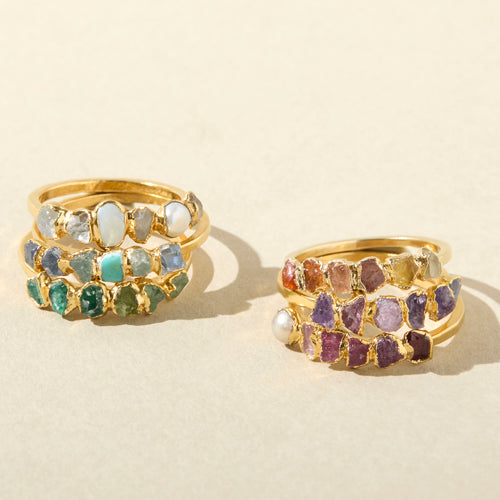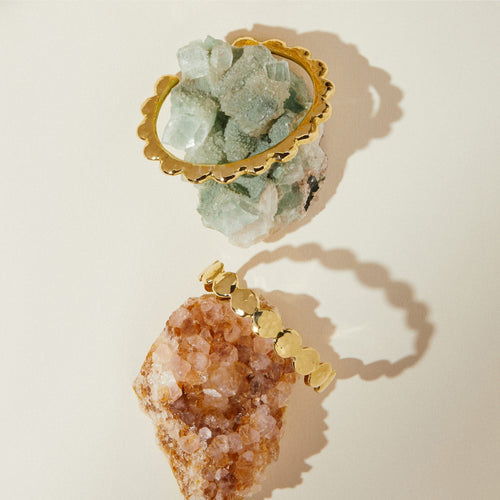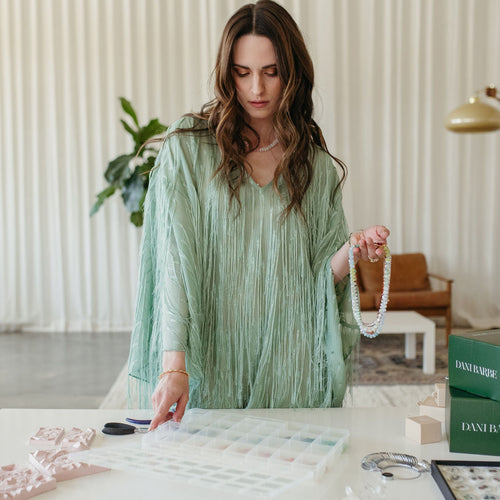How Do Mood Rings Work?
The Science Behind Mood Rings: What Your Color-Changing Accessory is Really Telling You
"How do mood rings work?" is a popular question that many don’t know can be answered scientifically. Maybe you remember the days of rocking your favorite mood ring as a kid and are now contemplating buying one to mix nostalgia + style in your everyday look. You’d watch with wonder as it magically changed colors, wondering what emotion it was picking up on. Well, believe it or not, mood rings are not just a fun accessory, they can give insight into your emotional state! Let’s dive into the fascinating world of mood rings and what they really mean.
The Science Behind Mood Rings
There is science behind how mood rings work... The secret lies in liquid crystal technology. Liquid crystals are a unique type of crystal that are thermochromic, meaning they change colors in response to temperature changes. Mood rings contain a small piece of liquid crystal inside that is sensitive to the temperature of your skin.
The temperature of your skin varies depending on your emotional state, which is where the magic - and science - happens. When you put on your mood ring, the liquid crystal in the ring responds to your body temperature and changes color accordingly. The colors of the mood ring correspond to different emotions, with warmer colors like red and orange associated with creativity and excitement, while cooler colors like blue and green are linked to calmness and relaxation.
How Mood Rings Work
So, what’s actually happening when your mood ring changes color? When your skin temperature rises, the liquid crystal in the mood ring absorbs the heat and changes its molecular structure. This change in molecular structure causes the liquid crystal to reflect different wavelengths of light, creating the color change you see on your ring.
As your skin temperature decreases, the liquid crystal in the ring returns to its original state, and the ring changes back to its original color. It’s a fascinating process that is still being studied by scientists today.
Limitations and Criticisms of Mood Rings
Of course, like any trendy accessory, mood rings have their fair share of skeptics. Some people argue that there’s no real evidence to support the idea that specific colors are linked to specific moods. Others say that the technology behind mood rings isn’t particularly accurate or scientific.
While it’s true that there’s no universal standard for mood ring colors, many people do report feeling a certain way when they see a particular color on their ring. It’s also worth noting that mood rings aren’t meant to be a scientific tool for measuring your emotions, but rather a fun and playful accessory that can help you express yourself.
Fun Facts About Mood Rings
Mood rings were actually invented in the late 1960s by two New York inventors named Joshua Reynolds and Maris Ambats. The original mood rings were made using liquid crystal technology, which was a new and cutting-edge technology at the time.
Since then, mood rings have become a popular accessory across the world. They’ve been featured in movies, TV shows, and even on the runway. And it’s not just mood rings that use liquid crystal technology, but things we use in our day to day such as baby bottles and thermometers that change color based on temperature.
Give It a Try and Learn About Your Emotions!
Mood rings are more than just a fun and playful accessory – they’re based on real science! While there’s no universal standard for mood ring colors, many people do report feeling a certain way when they see a particular color on their ring. For skeptics and believers alike there’s no denying that they’re a fun and playful way to express yourself. So go ahead, treat yourself to a mood ring and see what color it turns – who knows, it might just reveal something new about your emotions that you never knew before!












Leave a comment